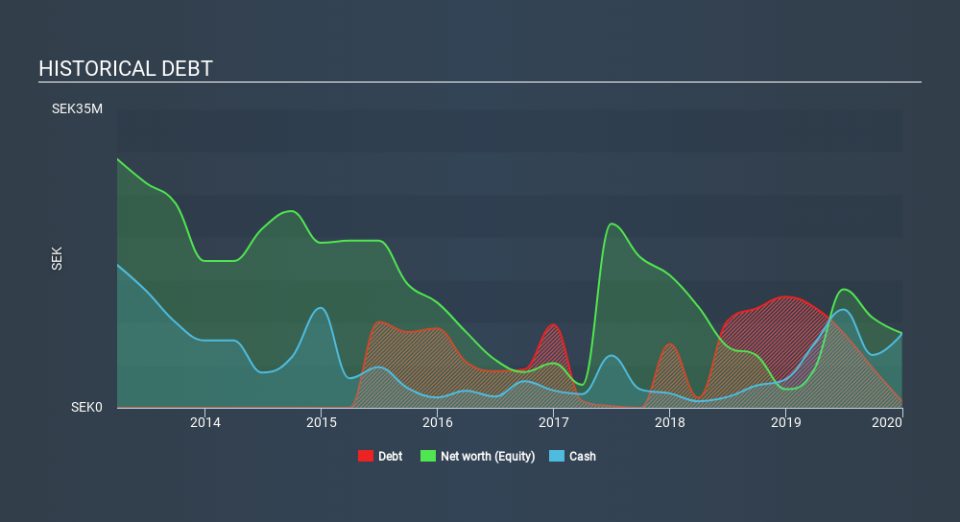We're Not Very Worried About Ortivus's (STO:ORTI B) Cash Burn Rate

Even when a business is losing money, it's possible for shareholders to make money if they buy a good business at the right price. For example, Ortivus (STO:ORTI B) shareholders have done very well over the last year, with the share price soaring by 136%. But the harsh reality is that very many loss making companies burn through all their cash and go bankrupt.
So notwithstanding the buoyant share price, we think it's well worth asking whether Ortivus's cash burn is too risky For the purpose of this article, we'll define cash burn as the amount of cash the company is spending each year to fund its growth (also called its negative free cash flow). Let's start with an examination of the business's cash, relative to its cash burn.
View our latest analysis for Ortivus
Does Ortivus Have A Long Cash Runway?
A company's cash runway is calculated by dividing its cash hoard by its cash burn. Ortivus has such a small amount of debt that we'll set it aside, and focus on the kr8.7m in cash it held at December 2019. Importantly, its cash burn was kr3.5m over the trailing twelve months. Therefore, from December 2019 it had 2.5 years of cash runway. That's decent, giving the company a couple years to develop its business. You can see how its cash balance has changed over time in the image below.
How Well Is Ortivus Growing?
Notably, Ortivus actually ramped up its cash burn very hard and fast in the last year, by 164%, signifying heavy investment in the business. While that's concerning on it's own, the fact that operating revenue was actually down 2.6% over the same period makes us positively tremulous. In light of the above-mentioned, we're pretty wary of the trajectory the company seems to be on. In reality, this article only makes a short study of the company's growth data. This graph of historic earnings and revenue shows how Ortivus is building its business over time.
How Hard Would It Be For Ortivus To Raise More Cash For Growth?
Even though it seems like Ortivus is developing its business nicely, we still like to consider how easily it could raise more money to accelerate growth. Generally speaking, a listed business can raise new cash through issuing shares or taking on debt. Commonly, a business will sell new shares in itself to raise cash to drive growth. By comparing a company's annual cash burn to its total market capitalisation, we can estimate roughly how many shares it would have to issue in order to run the company for another year (at the same burn rate).
Ortivus's cash burn of kr3.5m is about 2.0% of its kr177m market capitalisation. That means it could easily issue a few shares to fund more growth, and might well be in a position to borrow cheaply.
So, Should We Worry About Ortivus's Cash Burn?
Even though its increasing cash burn makes us a little nervous, we are compelled to mention that we thought Ortivus's cash burn relative to its market cap was relatively promising. Considering all the factors discussed in this article, we're not overly concerned about the company's cash burn, although we do think shareholders should keep an eye on how it develops. While it's important to consider hard data like the metrics discussed above, many investors would also be interested to note that Ortivus insiders have been trading shares in the company. Click here to find out if they have been buying or selling.
Of course, you might find a fantastic investment by looking elsewhere. So take a peek at this free list of interesting companies, and this list of stocks growth stocks (according to analyst forecasts)
If you spot an error that warrants correction, please contact the editor at editorial-team@simplywallst.com. This article by Simply Wall St is general in nature. It does not constitute a recommendation to buy or sell any stock, and does not take account of your objectives, or your financial situation. Simply Wall St has no position in the stocks mentioned.
We aim to bring you long-term focused research analysis driven by fundamental data. Note that our analysis may not factor in the latest price-sensitive company announcements or qualitative material. Thank you for reading.


